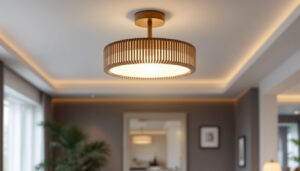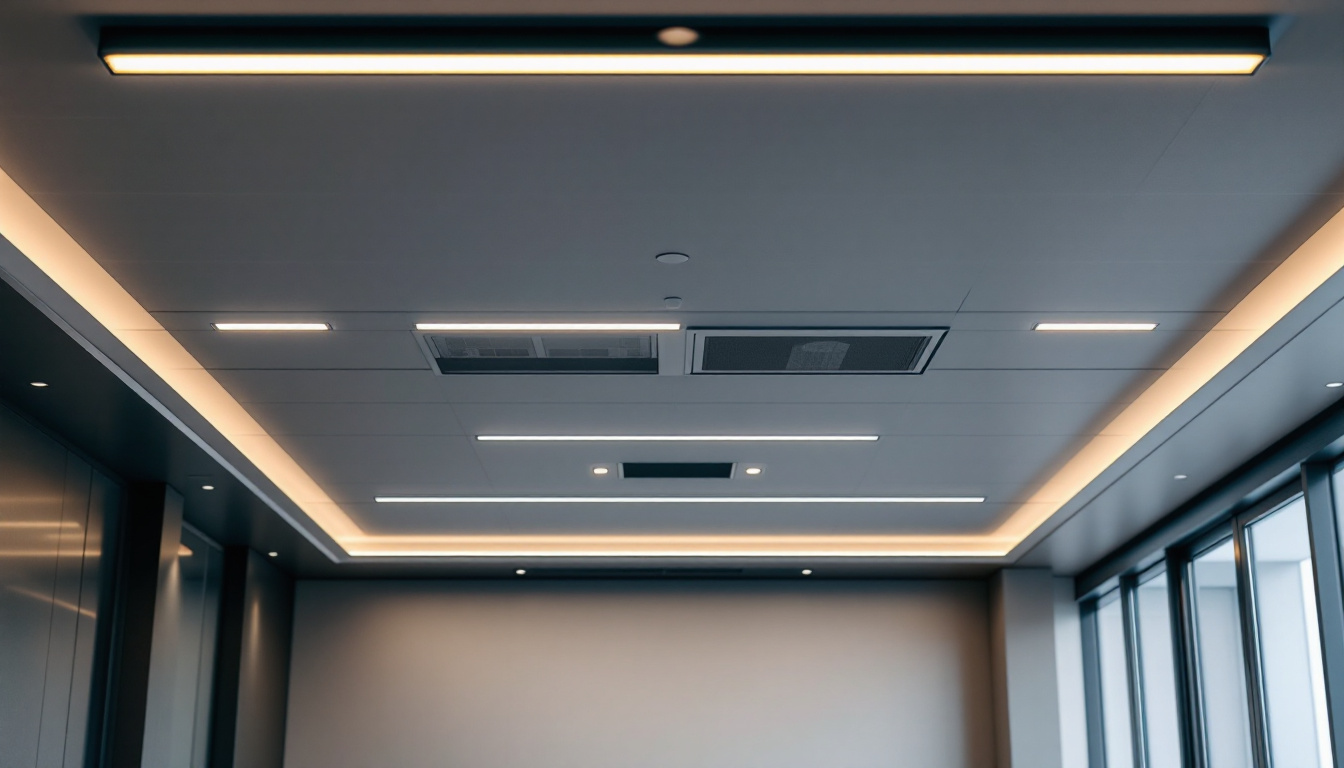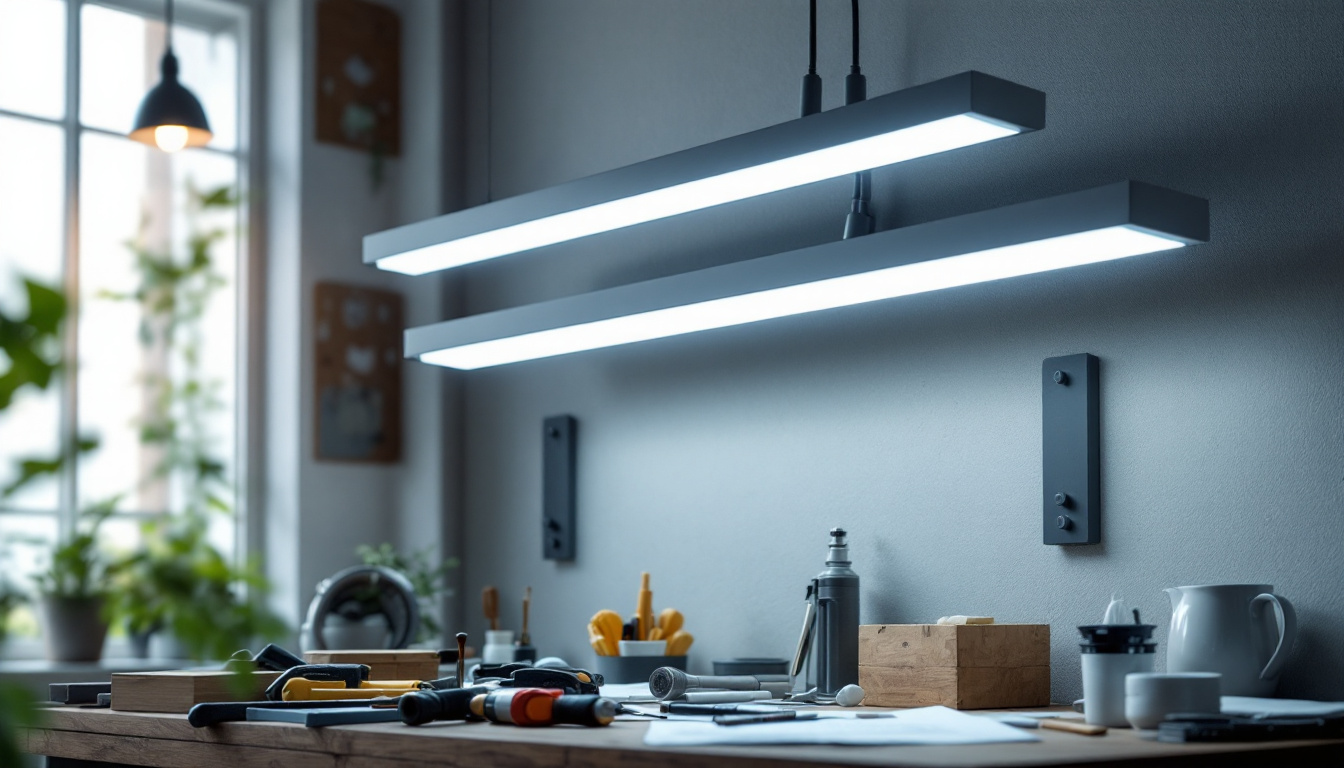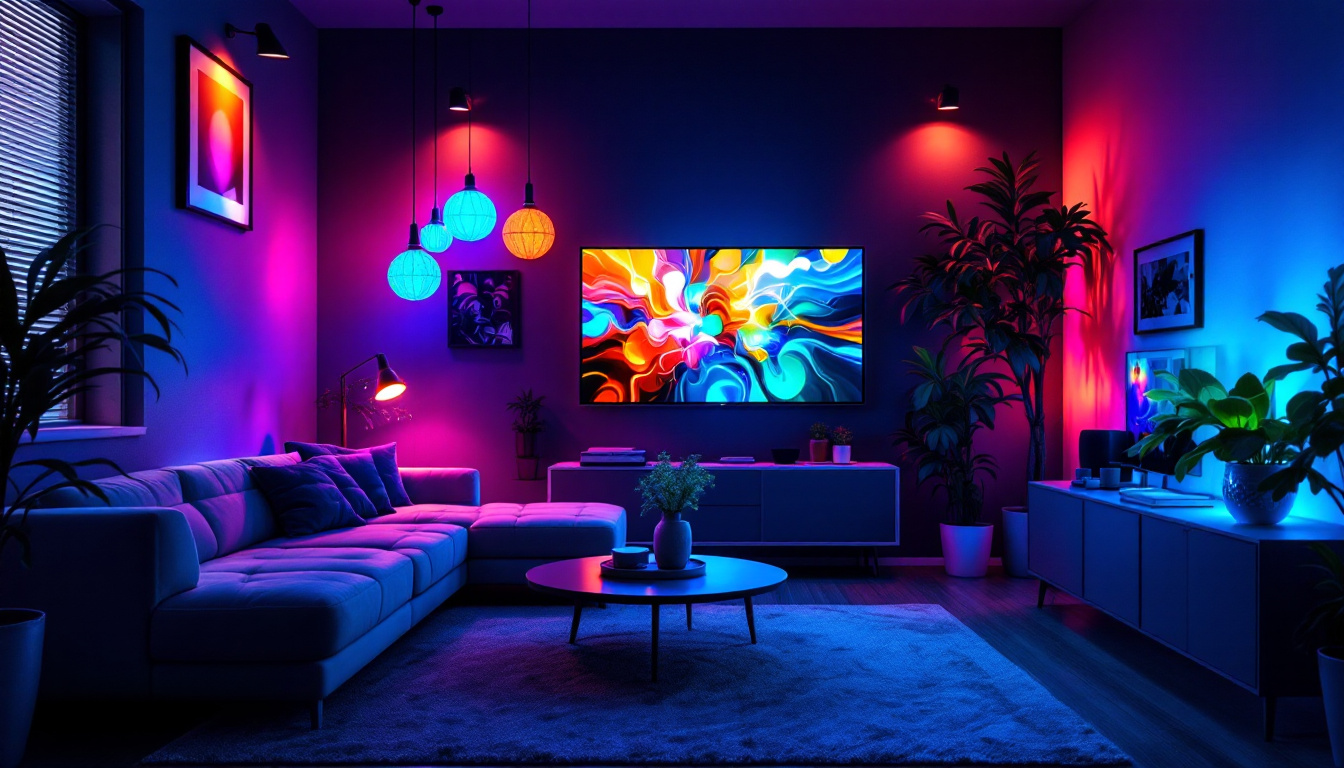

When it comes to modern lighting solutions, LED drop ceiling lights have emerged as a popular choice for both residential and commercial spaces. Their efficiency, longevity, and aesthetic appeal make them an ideal option for lighting contractors looking to meet client needs effectively. However, to ensure a successful installation and optimal performance, a comprehensive checklist is essential. This article aims to provide a detailed guide tailored specifically for lighting contractors, covering everything from product selection to installation best practices.
Before diving into the checklist, it’s crucial to understand what LED drop ceiling lights are and their benefits. These fixtures are designed to fit seamlessly into suspended ceilings, providing uniform lighting while minimizing energy consumption. Their sleek design allows for a clean and modern look, making them suitable for various environments. The integration of LED technology into drop ceiling lights not only enhances aesthetics but also aligns with contemporary sustainability goals, making them a preferred choice for eco-conscious consumers.
LED technology offers several advantages over traditional lighting options. Firstly, they consume significantly less energy, which translates to lower utility bills for clients. Secondly, LEDs have a longer lifespan, often lasting up to 25,000 hours or more, reducing the frequency of replacements. This longevity not only saves money but also minimizes maintenance efforts. Additionally, the durability of LED lights means they are less prone to breakage, making them ideal for high-traffic areas where traditional bulbs might fail more frequently.
Furthermore, LED lights produce less heat compared to incandescent or fluorescent bulbs. This feature is particularly beneficial in commercial settings, where excess heat can lead to increased cooling costs. The reduced thermal output of LEDs can contribute to a more comfortable environment for both employees and customers. Moreover, LEDs are available in various color temperatures, allowing lighting contractors to tailor the ambiance of a space according to client preferences. From warm white tones that create a cozy atmosphere to cooler temperatures that enhance focus and alertness, the versatility of LED lighting can significantly impact the mood and functionality of a space.
LED drop ceiling lights are versatile and can be used in a variety of settings. Common applications include offices, schools, hospitals, and retail environments. In offices, they provide bright, even illumination that enhances productivity. The ability to adjust brightness levels and color temperatures can also help reduce eye strain during long working hours. In schools and hospitals, the right lighting is essential for creating a conducive learning and healing environment, where clarity and comfort are paramount for both students and patients.
Moreover, retail spaces benefit from LED drop ceiling lights as they can highlight products effectively while maintaining an inviting atmosphere. The crisp, clear light emitted by LEDs can make colors pop, drawing attention to merchandise and enhancing the overall shopping experience. Understanding these applications can help contractors recommend the best solutions to their clients. Additionally, as businesses increasingly focus on sustainability, the energy-efficient nature of LED drop ceiling lights aligns perfectly with green building practices, making them an attractive option for new constructions and renovations alike.
Having the right tools and materials is critical for a successful installation. Below is a list of essential items that every lighting contractor should have on hand when working with LED drop ceiling lights.
Each of these tools plays a vital role in ensuring a smooth installation process. For instance, a voltage tester is crucial for confirming that power is off before starting any electrical work, while a level ensures that fixtures are installed straight and even.
Choosing high-quality materials is essential for the longevity and performance of the lighting system. Contractors should ensure that the LED fixtures are compatible with the ceiling grid and that all electrical components meet safety standards.
Once the necessary tools and materials are gathered, the next step is the installation process. Following best practices can help ensure a successful installation that meets both safety standards and client expectations.
Before installation begins, it’s important to plan the layout of the LED drop ceiling lights. This involves determining the optimal placement to achieve even lighting throughout the space. Factors to consider include the size of the room, the height of the ceiling, and the specific lighting needs of the area.
Using a measuring tape, contractors should mark the locations for each fixture on the ceiling grid. A good rule of thumb is to space fixtures approximately 4 to 6 feet apart, depending on the wattage and lumen output of the LED lights. This spacing ensures adequate illumination without creating overly bright or dark areas.
Once the layout is established, the next step is to make the necessary electrical connections. This process should always begin with turning off the power at the circuit breaker to ensure safety. After confirming that the power is off with a voltage tester, contractors can proceed to connect the wiring from the fixtures to the existing electrical system.
It’s essential to follow local electrical codes and regulations during this process. Properly securing connections with connectors and terminals will help prevent electrical failures and ensure the safety of the installation.
After the installation is complete, it’s time to test the lights. Turning the power back on, contractors should check each fixture to ensure they are functioning correctly. If any lights do not illuminate, it’s important to troubleshoot the connections and wiring.
Additionally, making final adjustments to the positioning of the fixtures can enhance the overall lighting effect. This may involve tilting or repositioning lights to eliminate shadows or highlight specific areas of the room.
Once the installation is complete, educating clients about maintenance is crucial for the longevity of their LED drop ceiling lights. While LEDs require less maintenance than traditional bulbs, some care is still necessary to ensure optimal performance.
Dust and debris can accumulate on light fixtures, diminishing their brightness over time. Regular cleaning with a soft cloth or duster can help maintain the appearance and efficiency of the lights. Contractors should recommend a cleaning schedule to clients, ideally every few months, depending on the environment.
Encouraging clients to monitor the performance of their LED lights can help identify any issues early on. If a light begins to flicker or dim, it may indicate a problem with the fixture or the electrical connections. Promptly addressing these issues can prevent more significant problems down the line.
Selecting the right LED drop ceiling lights is a crucial aspect of the contractor’s role. With a variety of options available, understanding the key features and specifications can help in making informed decisions.
The lumen output of a light fixture indicates its brightness, while wattage reflects its energy consumption. When choosing LED drop ceiling lights, contractors should consider the lumen output required for the specific application. For instance, office spaces may require higher lumen levels for productivity, while softer lighting may be suitable for relaxation areas.
As a general guideline, a fixture that provides around 100 lumens per square foot is often sufficient for most commercial spaces. However, this can vary based on the nature of the work being done in the area.
Color temperature is another important factor to consider. Measured in Kelvin (K), color temperature affects the ambiance of a space. Warmer tones (2700K-3000K) create a cozy atmosphere, while cooler tones (4000K-5000K) promote alertness and focus.
Contractors should discuss color temperature options with clients to ensure the lighting aligns with their preferences and the intended use of the space. Providing samples or visual aids can help clients make informed choices.
Compliance with safety standards is a non-negotiable aspect of any lighting installation. Lighting contractors must stay informed about local building codes and regulations to ensure that their work meets all necessary requirements.
Electrical codes govern the installation of lighting fixtures, including wiring methods, grounding, and circuit protection. Familiarity with these codes is essential for ensuring safety and preventing potential hazards. Contractors should also be aware of any specific requirements related to LED lighting, such as energy efficiency standards.
Choosing LED products that are certified by recognized organizations can provide an added layer of assurance regarding safety and performance. Look for certifications such as UL (Underwriters Laboratories) or ETL (Intertek) to ensure that the products meet industry safety standards.
LED drop ceiling lights represent a modern and efficient lighting solution that can greatly enhance the functionality and aesthetics of any space. For lighting contractors, having a comprehensive checklist is invaluable for ensuring successful installations that meet client expectations. From understanding the technology to following best practices during installation and maintenance, each step plays a critical role in delivering quality service.
By staying informed about the latest trends, products, and regulations, contractors can position themselves as trusted experts in the field. This not only leads to satisfied clients but also fosters long-term relationships that can result in repeat business and referrals.
Ultimately, the right approach to LED drop ceiling lights can transform spaces, making them brighter, more inviting, and energy-efficient. With this ultimate checklist in hand, lighting contractors are well-equipped to tackle any project with confidence and professionalism.
Ready to elevate your lighting installations with the efficiency and style of LED drop ceiling lights? Look no further than LumenWholesale, where we provide lighting contractors with the highest quality, spec-grade lighting products at unbeatable wholesale prices. Say goodbye to local distributor markups and hello to a vast selection of industry-standard lighting that promises reliability and high performance for every project. Plus, with free shipping on bulk orders, you can stock up on premium lighting at the best value — without any hidden fees. Make your next project shine brighter with the perfect blend of quality, affordability, and convenience at LumenWholesale.

Discover how a 4 lamp fluorescent fixture can revolutionize your lighting installation projects.

Discover why purchasing outdoor string lights in bulk from local distributors might not be the bright idea you think it is.

Discover the transformative power of RGB lights in modern design with insights tailored for lighting contractors.

Discover why lighting contractors should prioritize replacing fluorescent lights with LEDs.
Get notified when NEW deals are released.
Optimize your budget with wholesale discounts.
Only top-quality, specification-grade lighting products.
No additional costs at checkout - what you see is what you pay.
We understand the unique needs of contractors.